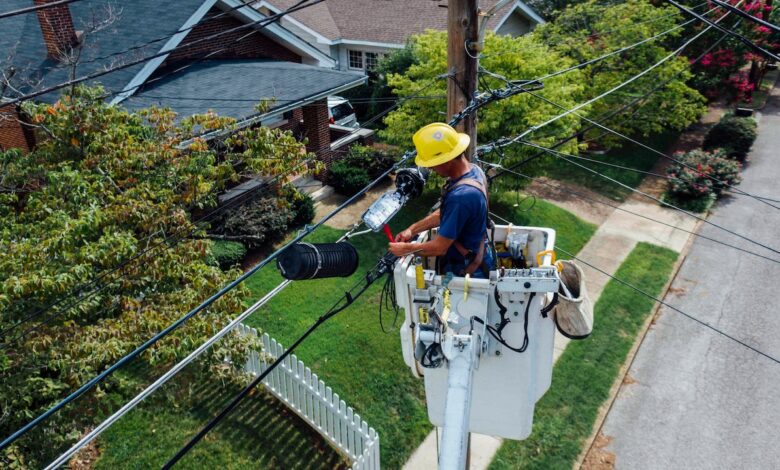
In the past few years, enterprises like Amazon and Netflix have built robust brands and retained customers through continuous innovation and customer-centricity. This phenomenon has gradually raised consumer expectations in terms of how they interact with other businesses as well.
Adopting Customer Identity and Access Management (CIAM) practices in this paradigm shift can help even the most traditional enterprises, like utilities, become customer-centric and perform better. For example, by deploying efficient CIAM systems, utilities can centralize customer data for better insights, efficiently address concerns and service requests, protect customer data as per regulations, analyze consumption patterns, and protect customers against scams.
However, it may be convenient to reason that utilities around the globe are mostly monopolies and have little to no incentive to serve their customers like Amazon or Netflix do. While some utilities globally are monopolies in the markets they serve — for example, power suppliers in Los Angeles and New York City, power supply markets are competitive in cities like Hamburg, with multiple suppliers competing, and customers can seamlessly switch between suppliers.
Monopolies or not, customer-centricity is not just a competitive advantage but also delivers an operational edge for utilities. And CIAM helps put customers at the center of operational decisions and strategy.
Here, I discuss how CIAM can specifically help utilities.
Simplified User Experience
Utility customers today have numerous touchpoints to engage with various services. These touchpoints encompass multiple channels, including websites and mobile apps. However, ensuring a streamlined and secure user experience across these multi-channels can be challenging.
The imperative is to enhance convenience and potentially eliminate passwords, as passwords can be insecure due to specific circumstances. Utilities can leverage CIAM solutions to deploy friendly yet secure authentication methods, such as fully passwordless and semi-passwordless authentication — passkeys, email or SMS OTPs, or magic links — to eliminate the need for users to manage intricate passwords.
CIAM solutions also provide Single Sign-On (SSO) integration, which enables customers to log in just once and seamlessly access all relevant utility apps and services under one umbrella. As a result, customers no longer need to authenticate multiple times, making it simpler for them to access numerous services.
Robust Security Measures
Information security is a priority for utilities due to the high volume of personally identifiable user data they handle and the critical nature of their vast infrastructure.
According to the X-Force Threat Intelligence Index 2023, energy organizations faced a significant threat landscape, ranking as the fourth-most attacked industry in 2022. Furthermore, approximately 10.7% of observed cyberattacks targeted this sector, highlighting the persistent and growing risks the energy industry faces.
In general, Verizon Data Breach Investigations Report 2023 reveals that 74% of all breaches involve the human element, stemming from errors, privilege misuse, stolen credentials, or social engineering. Furthermore, an overwhelming 83% of breaches are perpetrated by external actors, with financial motivations driving 95% of these attacks. Attackers frequently exploit stolen credentials, resort to phishing techniques, and exploit vulnerabilities as primary avenues for breaching organizations.
CIAM systems help utilities against various threats at the authentication and authorization layers with built-in features like risk-based authentication, rate limiting, and intelligent IP address blocking to thwart attacks while ensuring seamless access for legitimate customers.
In addition, CIAM systems typically provide audit trails with detailed system activity to help understand any misuse or abuse. And they offer granular access controls so utilities can give apt access to employees specific to their jobs and minimize the attack surface for insider threats while ensuring that data remains encrypted at rest and in transit.
Better Customer Insights
A cornerstone of CIAM is emphasizing centralizing customer data generated across multiple services and touchpoints. It offers a comprehensive and consolidated view and management of customer data in a centralized dashboard, thereby eliminating data fragmentation and silos.
With this, utilities can analyze and gain insights into broader consumption patterns, customer trends, and preferences. This information can help improve marketing plans and better project revenue generation.
Enhanced Scalability
CIAM systems can handle enormous customer traffic with dynamic scaling capabilities, whether customers are logging in, raising service requests, or paying bills — this is also helpful when a utility is expanding its customer base or launching in new locations.
This scalability characteristic ensures that utilities can cater to the rising service demand without sacrificing performance or customer satisfaction. It enables utilities to confidently expand their customer base even more while upholding accessibility, privacy, and security for their customers.
Built-in Compliance Workflows
Utilities, depending on the nature of their services, have to adhere to some of the most stringent data protection regulations. While not all CIAM solutions offer comprehensive compliance management, some reputed solutions offer built-in workflows for regulations like GDPR, CCPA, NIST, and PCI DSS.
As CIAM systems excel in centralizing customer data, built-in workflows accelerate compliance management and mitigate regulatory risks more controllably while reducing the resources and costs required for regulatory compliance.
Conclusion
Considering the emerging threats and the massive customer base in the utility industry, embracing CIAM practices is no longer optional — it’s essential. By proactively adopting CIAM and acting decisively, utilities can position themselves to thrive in the digital landscape, offering their customers a safer and more seamless digital experience.
Featured Image Credit: Photo by Kelly; Pexels; Thank you!
Source link




